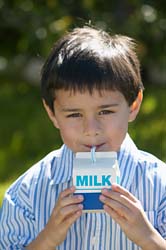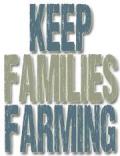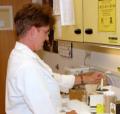 ARLINGTON, VA – The National Milk Producers Federation (NMPF) today praised the U.S. Department of Agriculture’s updated school meal standards that continue to stress the nutritional benefits of low-fat and fat-free milk and dairy products.
ARLINGTON, VA – The National Milk Producers Federation (NMPF) today praised the U.S. Department of Agriculture’s updated school meal standards that continue to stress the nutritional benefits of low-fat and fat-free milk and dairy products.
A final version of those standards was released Wednesday by the USDA following more than a year of public comment and review. NMPF submitted comments to USDA last April focusing on the nutrient package of milk and dairy foods, which will continue to be a core component of school meals, with fluid milk being offered at all meals.
“The updated nutrition standards require that low-fat or fat-free milk remain a part of every school meal,” said NMPF President and CEO Jerry Kozak. “That’s essential, given that milk is the single largest contributor of nutrients in kids’ diets. A single glass of milk delivers a very affordable package of nine essential nutrients important to good health, including calcium, potassium, phosphorus, protein and vitamins A, D and B12.”
In addition, Kozak said, including both plain and flavored milk in school meals is a sure-fire way to make diets more nutritious. “Milk, including chocolate milk, is the No. 1 source of three out of four nutrients cited by the U.S Dietary guidelines as lacking in children’s diets,” he said, “and chocolate milk is the drink-of-choice in school meal lines. Research shows that milk consumption can drop 35 percent or more when flavored milk is removed.” While Kozak said NMPF would have preferred if USDA allowed low-fat flavored milk in school meals along with fat-free flavored milk, “it’s essential that chocolate milk, in particular, remain available in school cafeterias to assure children are getting the nutrients milk provides.”
Kozak noted that, since 2006, the dairy industry has proactively reduced the sugar in flavored milk by nearly 40 percent, and flavored milk contributes only three percent of the added sugar in children’s diets.
“By comparison, fruit drinks and soft drinks contribute 45 percent of added sugar in kids’ diets,” Kozak said, “and many of these beverages provide few or no nutritional benefits.”
Kozak also praised USDA for keeping low-fat and fat-free yogurt and cheese on school breakfast and lunch menus. “Yogurt and cheese are kid-friendly solutions to help meet protein requirements,” he said. “They are favorites at home so it’s only natural that schools also should offer these products.”
Kozak noted that nearly two-thirds of the cheese distributed to schools by the Agriculture Department in the last school year was lower-fat varieties, and now nearly all the processed American and blended cheese USDA has available for schools will contain at least 25 percent less sodium.
“This also reflects the commitment of both USDA and the dairy industry to the address the problem of childhood obesity,” Kozak said.
The National Milk Producers Federation, based in Arlington, VA, develops and carries out policies that advance the well being of dairy producers and the cooperatives they own. The members of NMPF’s 31 cooperatives produce the majority of the U.S. milk supply, making NMPF the voice of more than 32,000 dairy producers on Capitol Hill and with government agencies.



 ARLINGTON, VA – The House Transportation and Infrastructure Committee voted today to remove truck weight reform language from the American Energy & Infrastructure Jobs Act, also known as the highway bill.
ARLINGTON, VA – The House Transportation and Infrastructure Committee voted today to remove truck weight reform language from the American Energy & Infrastructure Jobs Act, also known as the highway bill.
 ARLINGTON, VA – The National Milk Producers Federation (NMPF) today praised the U.S. Department of Agriculture’s updated school meal standards that continue to stress the nutritional benefits of low-fat and fat-free milk and dairy products.
ARLINGTON, VA – The National Milk Producers Federation (NMPF) today praised the U.S. Department of Agriculture’s updated school meal standards that continue to stress the nutritional benefits of low-fat and fat-free milk and dairy products.





